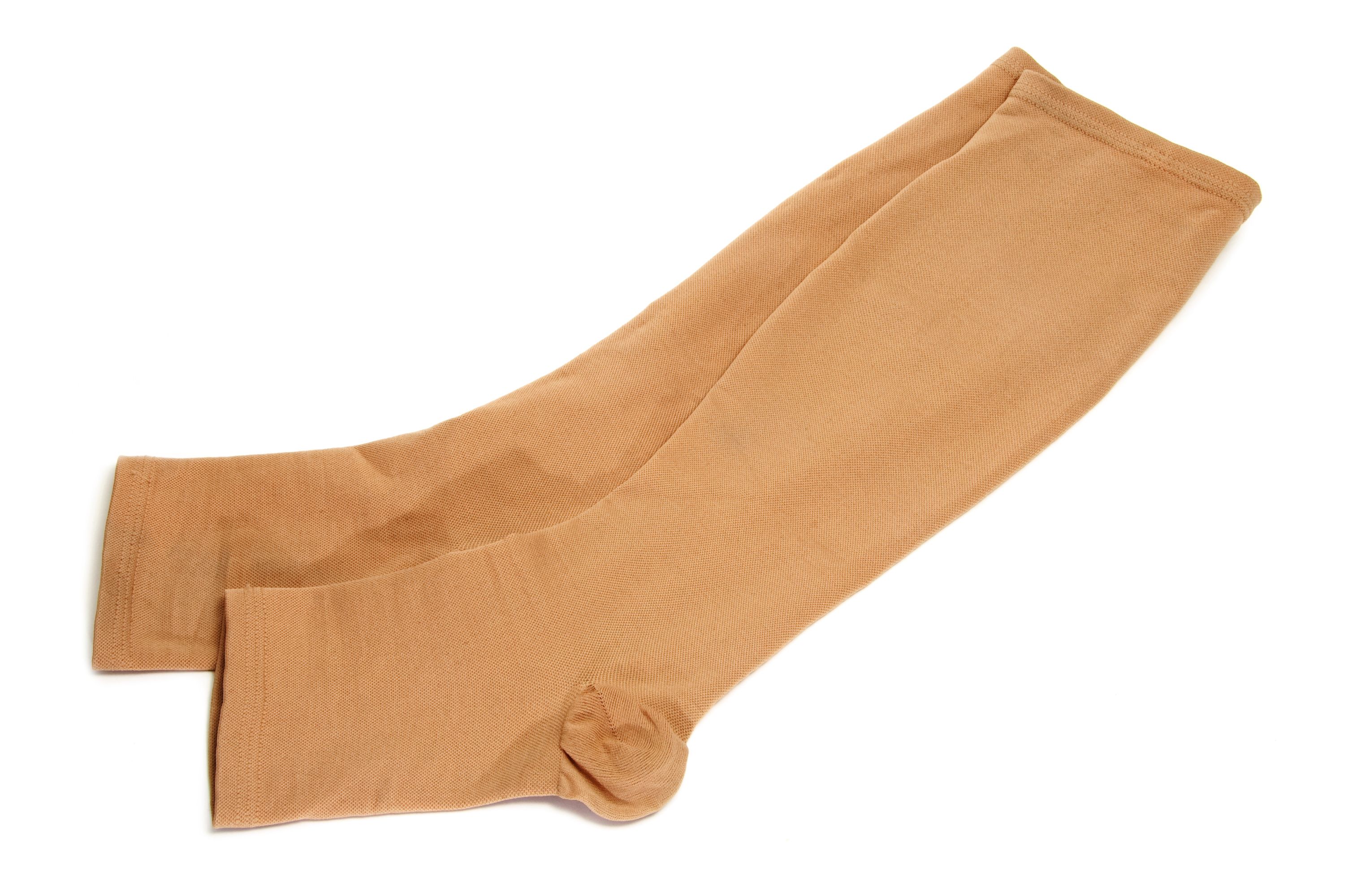Treatment of Chronic Venous Disease
Chronic Venous Disease
Varicose Veins
9/17/2024
The Importance of Compression Stockings in Managing Varicose Vein Symptoms
Overview
- Compression stockings are essential for managing varicose veins by improving blood circulation and reducing discomfort.
- This article explores the benefits of compression stockings, offering practical tips for correct usage, such as applying them in the morning, using application aids, inspecting for damage, and maintaining proper hygiene to ensure optimal effectiveness and comfort.
Introduction
Varicose veins, causing leg pain, occur when blood collects behind the small valves in a person’s veins instead of flowing smoothly back to the heart. These veins are more common in the legs and feet due to the longer distance blood must travel back to the heart. To address this, doctors often recommend the use of compression stockings.
These specially designed compression stockings for varicose veins help improve leg circulation, alleviating leg pain, or discomfort. In this article, we will examine the effectiveness of these stockings to keep your legs looking at their best.

What are Compression Stockings?
Compression stockings are specialized hosiery providing more pressure around the ankles and feet, which gradually decreases up the leg1. This gradient pressure helps push blood back toward the heart, preventing blood from pooling in the veins and reducing swelling1.
They come in various sizes, lengths, and compression levels to cater to individual needs1. They are widely recommended by healthcare professionals to alleviate symptoms associated with poor leg circulation, such as leg pain, swelling, and discomfort1. This makes them an essential tool in promoting vascular health and preventing the progression of venous disorders2.

Tips on Wearing Compression Stockings
Wearing compression stockings correctly can significantly help in managing varicose veins. Here are some tips:
Put the Compression Stockings Early in the Morning
We understand that putting on compression stockings can be challenging. However, it is highly recommended to apply them first thing in the morning3, ideally before getting out of bed. At this time, your legs are at their least swollen state, making it easier to apply the stockings and achieve a comfortable fit.
This practice prevents unnecessary tugging and discomfort later in the day when swelling might increase due to prolonged sitting or standing4. It provides your legs with the necessary support right from the start, setting you up for a day of improved circulation and reduced discomfort.
Utilize Application Aids for Compression Stockings
Putting on these stockings, especially those with higher compression levels, can sometimes be quite challenging. To ease this process, use application aids5. These tools, often resembling long sleeves, can simplify the task for those who struggle with applying compression stockings5.
Application aids work by creating a smooth surface around your leg, enabling you to glide the stockings up without excessive pulling or straining. This makes the process easier, ensuring proper application and optimal effectiveness5.
Inspect Compression Stockings Before Each Use
Tiny rips, tears, or snags might seem insignificant, but they can compromise the integrity of the compression stockings. Damaged stockings may not provide the necessary pressure gradient6, hindering their ability to improve circulation and reduce swelling. Additionally, worn or damaged areas could irritate your skin, causing discomfort or even potential infection7.
Developing a habit of daily inspection as part of your morning routine takes only a few minutes and offers significant benefits. By catching any minor damage early, you can replace the stockings and ensure you receive the full therapeutic effect7. Taking good care of your stockings is an investment in your long-term leg health and comfort.
Maintain Cleanliness of Compression Stockings
Maintaining proper hygiene is crucial for wearing compression stockings comfortably and effectively8. Since these garments are worn for extended periods, they can trap sweat and moisture, potentially leading to irritation or skin infections.
Wash them daily in warm water with a mild detergent suitable for delicate fabrics9. Avoid using harsh chemicals, bleach, or fabric softeners, as these can damage the elasticity of the stockings. Allow them to air dry completely before reapplying them.

Key Takeaway
If you're experiencing visible signs10, consider discussing compression stockings for varicose veins with your doctor. They can help determine the right level of compression for your specific needs and ensure you find comfortable and effective stockings for optimal results.
Remember, taking control of your leg health starts with a conversation with your doctor. Embrace the benefits of compression stockings and experience the difference they can make in your daily life.
If you are suffering from a varicose vein, you can try Diosmin + Hesperidin (Daflon® 1000) and discover how it improves vein health and potentially alleviates symptoms associated with chronic venous insufficiency, including leg pain, swelling, and varicose veins.
REFERENCES
- https://www.medicalnewstoday.com/articles/321662#overview
- https://www.ncbi.nlm.nih.gov/pmc/articles/PMC8407251/
- https://www.summithealth.com/health-wellness/compression-socks-who-should-wear-them
- https://www.nhlbi.nih.gov/health/varicose-veins#:~:text=Varicose%20veins%20may%20form%20whenever,periods%2C%20or%20an%20inactive%20lifestyle.
- https://www.nursingtimes.net/roles/older-people-nurses-roles/the-use-and-benefits-of-compression-stocking-aids-24-05-2005/
- https://www.sciencedirect.com/science/article/pii/S107858841100253X
- https://www.healthline.com/health/can-wearing-compression-socks-be-harmful
- https://veinscalgary.com/blog/How+To+Use+Compression+Stockings+Safely/83
- https://heritageparklaundry.com/blogs/the-laundry-lowdown/how-to-wash-your-compression-stockings#:~:text=Choose%20a%20delicate%20wash%20cycle,fabric%20softener%20on%20compression%20legwear
- https://www.nhlbi.nih.gov/health/varicose-veins
2026